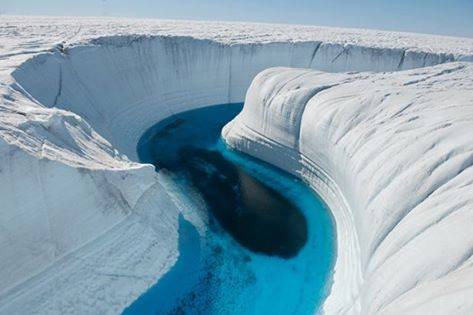Local Sea Level Rise- one of the trickiest predictions, part 4: Distribution delay and freshwater fo
Local Sea Level Rise- one of the trickiest predictions, part 4: Distribution delay and freshwater forcingThis is the final post of my 4 part series on why sea level rise is not distributed equally throughout the world’s oceans. If you missed the first posts, here are the links; (http://on.fb.me/1C2B9Lx, http://on.fb.me/1JsFhdw and http://on.fb.me/1CL9HST).In this final post, I’ll explain the distribution delay and freshwater forcing mechanisms that can influence different sea levels worldwide.Ice melting from glaciers and ice sheets contributes immediately to the global mean sea level rise but is not instantaneously uniform throughout the globe. It takes time for water to become distributed globally. For example, melt water from Greenland contributes to sea level rise in the North Atlantic within months, but can be on the decadal time scale to have a worldwide effect due to boundary, Kelvin and Rossby waves (these explain some of the physics behind water movement in the worlds oceans). A similar process can be observed with melt water from the Antarctic. It isn’t that simple though – for example, changes in atmospheric patterns due to the melting of the Greenland Ice Sheet could result in sea level changes in the Pacific within months.Another aspect of freshwater forcing that should be of concern, particularly those on the North American Coast is the weakening of the overturning process that drives ocean currents. In North America, the warm Gulf Stream flows north until it reaches an area between the UK and Greenland where it cools (becoming denser) and sinks. This deep, cold water then flows south-west until it eventually rises and heads back north as warm water once again. Increased freshwater input from the melting of Greenland’s Ice Sheet is diluting the dense salty water which impedes the waters ability to sink. A warmer North Atlantic region may also slow the cooling of the Gulf Stream, further inhibiting its ability to sink and flow. But what does all of that mean? Simply put, if less cool water is sinking, the out flow of Gulf Stream will slow. The slowing of that oceanic current will cause a build-up of water behind it, which is one reason why the North American coast is vulnerable to the fastest and largest sea level rise this century.Increased freshwater input from Antarctic Ice Sheet melt water could also have severe global implications, as the Antarctic Circumpolar Current is the ‘engine room’ of global ocean circulation. I have touched on this in a previous post (although not with respect to sea level rise), see: http://on.fb.me/1MRhJo7This series of posts was simply an overview of the complications in local sea level rise predictions. Other factors such as land depression from oil extraction and thermal expansion estimates further complicate the predictions. But hopefully now you have an idea of how difficult sea level rise is to predict, especially for a particular region!-MJAImage Credit: James Balog , illustrating melt water on the Greenland Ice Sheet.Further reading/references:IPCC on sea level rise: http://bit.ly/1CrvtOkGeneral Article on Local SLR: http://bit.ly/1nddrec (http://on.fb.me/1C2B9Lxand http://on.fb.me/1JsFhdw -- source link
#sea level#ocean#science
